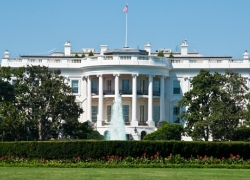Adjusting to DCOI: What government organizations need to know
Adjusting to DCOI: What government organizations need to know

As of August 1, 2016, the U.S. Office of Management and Budget (OMB) established the federal Data Center Optimization Initiative (DCOI), which calls for a new set of provisions that government data centers must be in compliance with.
Under the DCOI, federal data centers must achieve all of the following by September 30, 2018:
- Implement advanced energy-metering technology, and have energy-consumption reports ready to submit to the OMB.
- Operate at a 1.5 power usage effectiveness (PUE) rating by the deadline or risk closure.
- Replace manual reporting with data center infrastructure management (DCIM) software.
Background
The new set of regulations is only one in a lineage of government data center provisions that started with the Federal Data Center Consolidation Initiative (FDCCI) in 2010. The FDCCI initially aimed to reduce "the overall energy and real estate footprint," according to GCN, while also "increasing the overall IT security posture of the federal government."
In 2014, the Obama Administration added to the FDCCI with the Federal Information Technology Acquisition Reform Act (FITARA), which mandated that the Office of E-Government and Information Technology publish any "cost savings and optimization improvements" and regularly review data centers operating under federal agencies.
In effect, the DCOI will more or less replace the existing standards set forth by the the FDCCI.

Ensuring compliance
The first and arguably most important component of the DCOI is the implementation of DCIM, and not just because it's an explicitly stated requirement. The purpose of DCIM is to create a central hub for the entire facility from which energy consumption, airflow management, temperature and humidity, facility security, capacity planning and more can be managed and monitored. Hitting the 1.5 PUE mark will be much easier for some facilities than others. A data center located in Florida or Southern California, for instance, may struggle more with energy consumption as a result of higher cooling demands. This means meeting that PUE will require meticulous facility oversight, which is exactly what DCIM supplies.
Specifically, it's important that operators invest in DCIM that integrates with existing equipment. This will expedite deployment, which is important considering government agencies are operating under a deadline. The ability to generate reports from analysis of the many thousands of data sets within a facility will also be vital since it helps identify energy-saving measures. Not to mention, the OMB requires data center assessments, and these will be much easier to compile with DCIM that features intuitive reporting dashboards.
"Robust monitoring will be just as important as DCIM."
That having been said, DCIM alone will not be enough. The DCOI mandates an advanced power metering system that can accurately track energy consumption. As such, robust power monitoring will be just as important as DCIM implementation. These monitoring systems must integrate with each agencies' DCIM solutions of choice so operators can easily visualize power consumption within their facilities.
What's more, because facility cooling is such an energy hog, many operators will need to optimize their airflow management. Environmental monitoring systems will play a central role in making this happen. Again, these temperature and humidity sensors will need to feed data through DCIM at all times to make sure that cooling efforts aren't foiling DCOI compliance.
In theory, this sounds like a lot of work, but in practice, there are really two core tools that lead to DCOI compliance: DCIM, and comprehensive power and environmental monitoring systems that integrate seamlessly with DCIM.
From there, government data center managers will have all the insight they need to optimize their facility, and ensure DCOI compliance.



